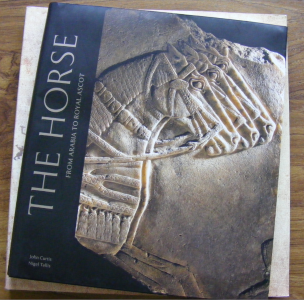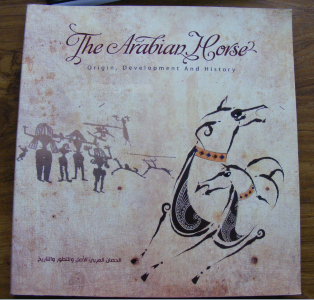The Horse - from Arabia to Royal Ascot
Went to the British Museum yesterday, with the boys, and 2 of my lovely friends, Hatty (with 2 of her girls) and Tracy (with her son). They've not been to the British Museum, and when I said I wanted to go before Gordon starts back at college, they jumped at the chance -- not confident navigating their way around London, they wanted to come with us seasoned travellers *lol* Considering I can't find my way around a tree without getting lost, I take that as quite the compliment ... then again, come to think of it, they were following the boys... ah well...
The main reason I wanted to visit the museum was for 'The Horse' exhibition. According to the blurb: "Discover the epic story of the horse -- a journey of 5000 years that has revolutionised human history. The story focuses on two breeds -- Arabians, which were prized in the desert for their spirit and stamina, and the Thoroughbred which was selectively bred from Arabians for speed and is now raced at world-famous courses such as Royal Ascot. Objects range from ancient to modern and include depictions of horses in stone reliefs, gold and clay models, horse tack, paintings by George Stubbs, and trophies and rosettes."
Unfortunately, picture-taking was not allowed, so I decided to treat myself and bought the book of the exhibition, which I thought was good value at £15 for the softback edition. It turned out to be even better value as any purchase of £15 or more entitled one to a free book -- I was expecting a little, brochure-type book. How wrong I was! The free book was bigger than the book I'd bought!!
My £15 book and the free book
I'll share a few pictures of the images in the book even though they won't do the exhibition justice ...
A wig-curler! (1550-1069BC, Egyptian)
Horse cheekpiece; the hole in its body is for the mouthpiece and the 2 rings on the back for the straps of the headstall (10th-7th century BC, probably Iran)
Assyrian wall relief (875-860 BC)
Close-up of horse's head -- the detail is amazing.
'Following the traditions of zoomorphic calligraphy which became popular in Iran and Turkey in the 19th century, Jila Peacock has used the poems of Hafez, the 14th century lyric poet of Shiraz, to create images of animals mentioned in the poems, like this horse'.
'Horse and Horseman' by Ahmed Moustafa (1996-98)
'A unique work of art in a genre invented by the artist; the whole composition consists of Arabic letters derived from literary works'.
'The Godolphin Arabian was imported from France in 1729 by Edward Coke. After Coke's death in 1733, the horse was taken to the stud of the 2nd Earl of Godolphin at Babraham, Cambridgeshire, where he remained until his death in 1753. Most known portraits of the Godolphin Arabian were painted after the horse's death.'
Olympic Commemorative Medal, London 1908
Reverse of London 1908 medal; the first time horses were shown on Olympic medals.










